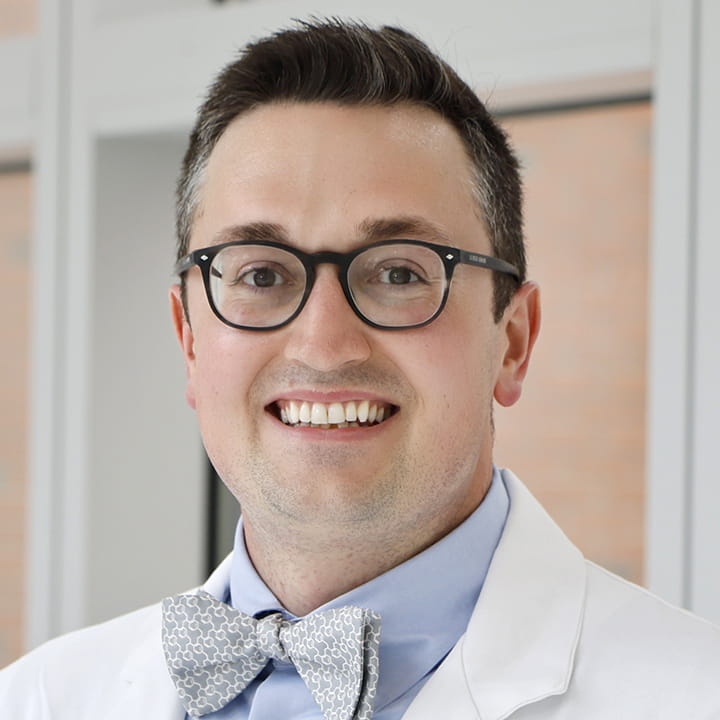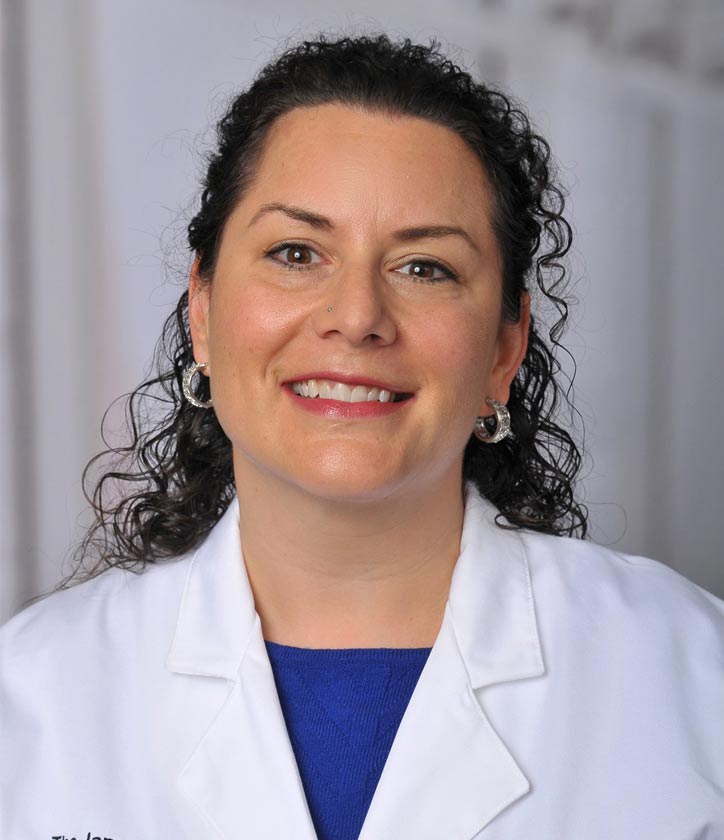Our Research Team
The neuromodulation team comprises more than 40 specialists who are international leaders at the forefront of scientific discoveries and innovations in neuromodulation, such as development of MRI-compatible neurostimulators, an MRI-guided brain pacemaker implantation technique, closed loop sensing and monitoring and an external handheld neuromodulation device to treat headaches.
The team is among the first in the world to conduct clinical trials of neuromodulation treatments for psychiatric disorders, traumatic brain injury, obesity, Alzheimer’s disease, addictions, autism, quadriplegia, chronic pain, back pain, headaches, heart failure and other conditions.
Marcia Bockbrader, MD, PhD
Assistant Professor, Physical Medicine and Rehabilitation
Dr. Bockbrader’s clinical interests include acute inpatient neurorehabilitation after central nervous system injury from stroke, traumatic brain injury, cancer or spinal cord injury. Her research areas include recreational therapy interventions to enhance the rehabilitation process, neuromodulation to improve function and quality of life for patients with disabilities and innovative ways to use technology in neurorehabilitation and education.
Jennifer Bogner, PhD, ABPP
Chair, Research and Academic Affairs, Physical Medicine and Rehabilitation
Associate Professor, Physical Medicine and Rehabilitation
One of Dr. Bogner’s areas of research is the study of factors that are associated with long-term outcomes following traumatic brain injury. She is the co-principal investigator of the Ohio Regional TBI Model System, a study that follows individuals for many years after their injury to find out what factors determine the best outcomes. Dr. Bogner is also interested in the study of substance use disorders after brain injury.
Laura Boxley, PhD
Assistant Professor, Psychiatry
Dr. Boxley is a neuropsychologist, she assesses the cognitive and psychiatric symptoms associated with different medical illnesses such as neurodegenerative disease, cancer and acquired brain injury. She is passionate about neuropsychology because it can help improve diagnostic accuracy and provide solutions for treatment and management of illness. She also enjoys the opportunity to participate in multidisciplinary research with my colleagues in medicine and education.
Anthony Caparso, PhD
Research Scientist, Neuroscience
Dr. Caparso is a biomedical engineer who focuses on neural stimulation.
John Corrigan, PhD, ABPP
Director, Rehabilitation Psychology Director, Ohio Valley Center for Brain Injury Prevention and Rehabilitation.
Dr. Corrigan is the project director for the Ohio Regional Traumatic Brain Injury Model System, a multicenter research program funded by the National Institute on Disability and Rehabilitation Research.
Erica Dawson, PhD
Assistant Professor, Psychiatry
Dr. Dawson chose to become a clinical neuropsychologist because of my interest in brain-behavior relationships. Neuropsychological evaluations help identify whether changes in thinking have occurred as a result of a medical illness or injury. What she enjoys most about being a neuropsychologist is the opportunity to help patients learn to work around their limitations with effective strategies and other forms of assistance.
Lynne Gauthier, PhD
Assistant Professor, Physical Medicine and Rehabilitation
Dr. Gauthier uses neuroimaging techniques to study the clinical effectiveness of constraint-induced movement therapy (CI therapy), which is used to treat hemiparesis (weakness on one side) resulting from stroke, cerebral palsy and brain injury. She works with individuals who have experienced brain injuries to aid them in overcoming emotional and physical challenges that can accompany recovery.
Michael Knopp, MD, PhD
Vice Chair of Research, Radiology
Novartis Chair of Imaging Research
Director, Center for Imaging Excellence
Professor, Radiology
Assistant Professor, School of Biological Sciences, Neuroscience
Dr. Knopp is experienced in developing and validating new imaging methodologies with an interest in magnetic resonance imaging and positron emission tomography. His scientific focus has been imaging of angiogenesis (physiological process through which new blood vessels form from pre-existing vessels) and response assessment. His current research focus is on functional and molecular hybrid imaging-based assessment as well as validation of imaging methodologies as biomarkers.
W. Jerry Mysiw, MD
Director and Chair, Physical Medicine and Rehabilitation
Medical Director, Dodd Hall Rehabilitation Services
Bert C. Wiley, MD, Chair in Physical Medicine and Rehabilitation
Co-Director, Traumatic Brain Injury Program
Associate Professor, Physical Medicine and Rehabilitation
In addition to his clinical interests in the rehabilitation of people with traumatic brain injury and electromyography, Dr. Mysiw’s research has focused on improving functional outcome after traumatic brain injury and spinal cord injury.
Bradley Otto, MD
Assistant Professor, Otolaryngology – Head and Neck Surgery
Dr. Otto’s area of expertise includes the medical and surgical management of sinus disease as well as minimally invasive skull base surgery. As a member of the Comprehensive Skull Base Surgery Center, Dr. Otto is also interested in the development of new techniques and devices to treat complex skull base disorders.
Douglas Scharre, MD
Director, Division of Cognitive Neurology
Medical Director, Neurobehavior and Memory Disorders Clinics
Director, Neurodegenerative Disease Brain Tissue and Cerebrospinal Repository
Associate Professor of Neurology
Dr. Scharre conducts clinical research in dementia and mild cognitive impairment that has been funded by National Institutes of Health, foundations and industry. He has many active grants, including clinical drug trials using cognitive enhancers and behavioral therapies, functional neuroimaging studies using SPECT and MRI and screening for mild cognitive impairment and early dementia diagnosis. Dr. Scharre is the creator of the Self-Administered Gerocognitive Exam (SAGE), a brief pen and paper test used to identify mild cognitive impairment from any cause and early dementia.
Nicole Young, PhD
Research Assistant Professor, Neuroscience
Dr. Young’s research areas include motor deficits and recovery of motor function and affective neuroscience (fear and anxiety). She is currently developing a method for flow fractionator for cell counting in homogenized neural tissue using flow cytometry.









